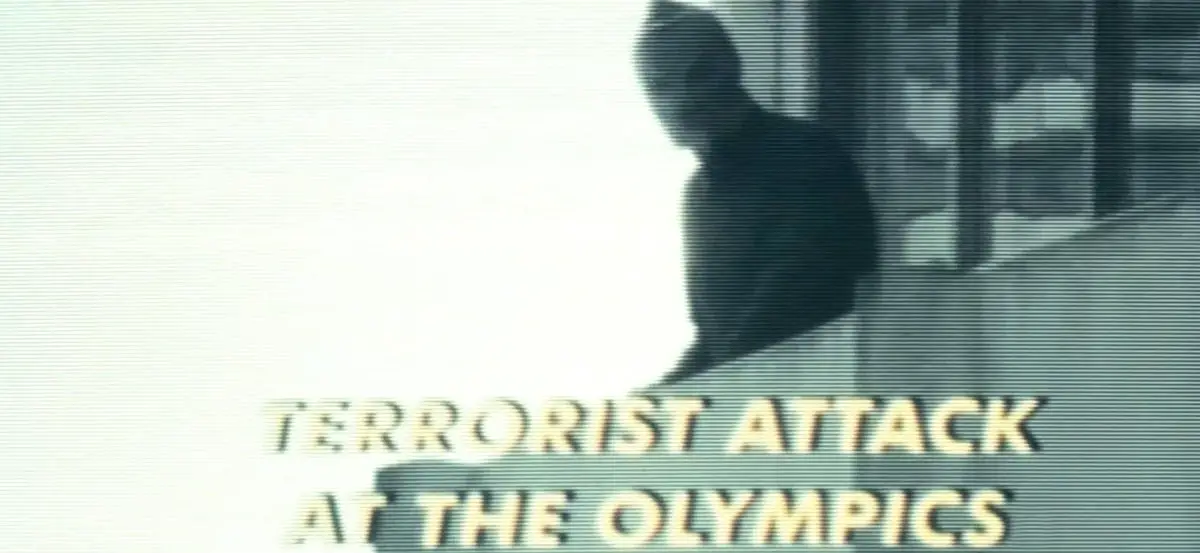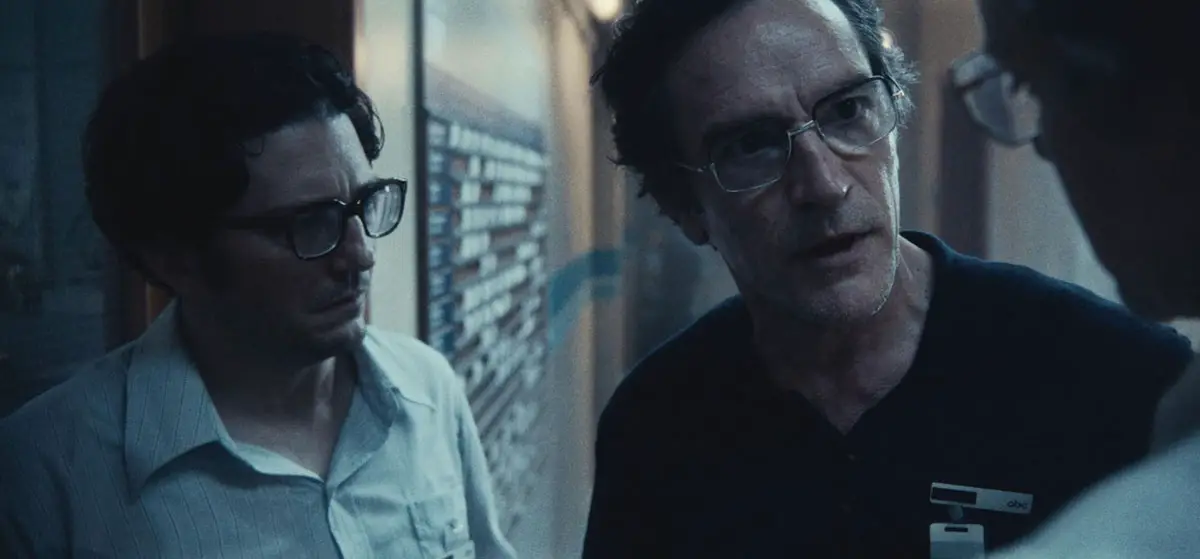September 5 (2024) – Film Review

Director: Tim Fehlbaum
Cast: Peter Sarsgaard, John Magaro, Ben Chaplin
Certificate: 15
By David Reid
Well, it’s that time of year once again, as film awards season is well and truly underway. That means we are currently faced with a plethora of choices as the main contenders vie for our attention and business. Although not considered an awards frontrunner, this little gem shone so brightly that it shouldn’t be ignored.
September 5 is set during the 1972 Olympics in Munich, which were billed as the “friendly” Games—an opportunity for post-war West Germany to project a more positive image of the country to the world. The film opens partway through the competition as the US ABC TV production team start their morning shift. They are based within offices in the Olympic Park itself, with the focus of the team—and the feature—centred on the busy, cramped production room. This dimly lit, enclosed environment evokes a sense of claustrophobia, similar to that of a spaceship movie—almost a key, uncredited background character, ever-present as events unfold. And unfold they do, in short order, as the sound of gunfire precedes confirmation that a number of Israeli athletes are being held hostage by a group of terrorists in the athletes’ village. There is speculation about the identity of the organisation behind the attack, although this is not confirmed onscreen.
This is one of the film’s strengths. As the sports team are forced to react to events for which they are unprepared, director and co-writer Tim Fehlbaum manages to bring the cinema audience into that space—almost as if the viewer is rubbing shoulders with the central characters from the outset. These comprise Peter Sarsgaard as the ABC TV sports president (best known for the TV series Dopesick); British actor Ben Chaplin as Marvin Bader, the head of network operations; and inexperienced sports TV producer Geoffrey Mason (John Magaro, from Past Lives).
“Rich mix of character”
Understandably, the team struggle as sports staff suddenly confronted by a developing news story. Should they step aside for the news journalists to manage coverage of this crisis? Should the cameras keep rolling, or be turned off? These individuals are thrust into a situation in which they must make a series of important choices—each dependent on resolving unforeseen moral and workplace dilemmas. This all plays out as circumstances shift rapidly within the tight constraints of live television production.
In hindsight, this was a seminal moment in the history of live news broadcasting—and, arguably, the birth of the rolling news coverage with which we are now very familiar, but which was ground-breaking—and immensely challenging—at the time. This is neatly encapsulated within a handful of scenes featuring terse dialogue between the three main male characters. The screenplay succinctly captures these key exchanges while simultaneously driving the narrative forward. The result is a rich mix of character, dialogue, sound, and editing, distilled into a tightly paced 95-minute runtime.
As the action unfolds, it becomes clear that Mason is relatively inexperienced in his producer role. His hesitancy adds to the tension, heightened by clever use of background music that alternates between building suspense and, at poignant moments, cutting to silence—causing the characters’ footsteps to eerily echo around the auditorium. This is a film that demands to be seen on the big screen, as the tension and uncertainty of the unfolding crisis keep the audience on the edge of their seats.
“Sharp end”
Archive footage from ABC cameras, including reports and interviews by US TV correspondent Jim McKay, is cleverly intercut with action within the on-location TV studio. This is blended seamlessly, to great effect. In a composite character, German actress Leonie Benesch (The White Ribbon, The Crown) plays a translator whose job responsibilities shift in real time with developments. Hers is a key—and noteworthy—performance, serving to counterbalance the testosterone-fuelled atmosphere at the sharp end of the action. It could also be interpreted as a reflection of gender roles in the workplace at that time.
The finished production conjures up the masculine intimacy of a tech environment, reminiscent of Francis Ford Coppola’s The Conversation and Florian Henckel von Donnersmarck’s The Lives of Others. It also reflects the best of investigative journalism films such as All the President’s Men and Spotlight. It could easily be envisaged as required viewing for journalism training courses for years to come.
Finally, for those who remember these events, some of the iconic images used here will be instantly recognisable. For those less familiar with the real-life events on which this film is based, I would suggest that the experience and impact of this feature will be enhanced by resisting the temptation to research the facts until after watching what is a memorable and moving film.












